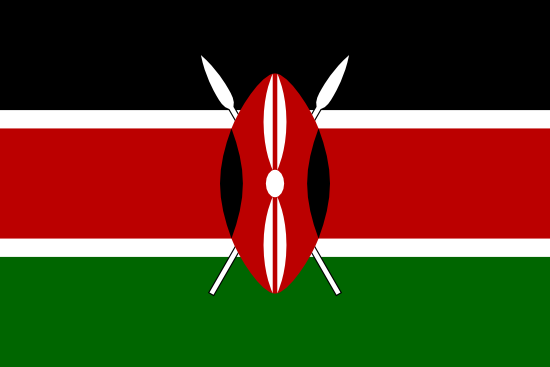Land Degradation Index (LDI) in Kenya for 2020 and today (March 02, 2025), we need to clarify what the "Land Degradation Index" means, as it’s not a universally standardized single metric but can be interpreted through frameworks like the Land Degradation Neutrality (LDN) indicators used under SDG 15.3.1. These indicators—land cover change, land productivity (e.g., via NDVI), and soil organic carbon (SOC)—are commonly aggregated to assess degradation. No specific "LDI" value exists as a standalone index for Kenya in widely available data, so I’ll use the best proxies from 2020 and extrapolate to 2025 based on trends and available sources, critically evaluating gaps and assumptions.
Framework and Assumptions
-
Definition: I’ll assume the LDI refers to the proportion of Kenya’s land area classified as degraded, derived from LDN indicators (land cover loss, productivity decline, SOC depletion). This aligns with efforts by USGS, RCMRD, DRSRS, and KFS (e.g., SLEEK) and UNCCD’s LDN reporting.
-
Data Sources: 2020 data draws from UNCCD’s LDN baseline (1992-2015 trends), FAO, and ICPAC Geoportal. For 2025, I’ll use 2023 updates (e.g., SLEEK, UNCCD) and project forward, as no 2025-specific index exists.
-
Land Area: Kenya’s total land area is 580,367 km².
Land Degradation Index in 2020
Available Data
-
UNCCD LDN Baseline (2015, Trends 1992-2015):
-
Kenya’s LDN national baseline (Mulinge et al., 2016) used GIMMS NDVI and land cover datasets over 1992-2015, separating human-induced degradation via the Residual Trend (RESTREND) method with soil moisture data.
-
Findings:
-
Persistent negative trends (browning): 21.6% (~125,359 km²) showed productivity decline.
-
Land cover change: 5.6% (~32,501 km²) shifted classes (e.g., forest to cropland).
-
Total degraded estimate: 20-25% (116,073-145,092 km²), combining productivity loss and cover change, though overlaps adjust this.
-
-
-
FAO and Other Reports:
-
SpringerLink (2022) cites 30-40% of ASALs (139,500-186,000 km² of 465,000 km²) as degraded, plus 2% (11,607 km²) completely lost by 2020. ASALs are 80% of Kenya’s land, so this suggests 24-32% nationally (139,500-186,000 km²).
-
Muchena (2008) and UNEP (2009) noted 64% (371,435 km²) under moderate degradation and 23% (133,484 km²) severely degraded in 1997, with worsening trends by 2020.
-
-
ICPAC Geoportal (2015-2016):
-
Actual Land Degradation Index (Oct 2015-Mar 2016) mapped severity at 1 km resolution, but no national percentage is specified. It aligns with ~20-30% degradation estimates.
-
2020 Estimate
-
Synthesis: Combining UNCCD’s 20-25% (human-induced) and FAO’s 30-40% (ASAL-focused), a conservative 2020 LDI is 25-30% (~145,092-174,110 km²). This reflects:
-
Land cover loss: 5-6% (29,018-34,822 km²).
-
Productivity decline: 20-25% (116,073-145,092 km²).
-
SOC not quantified but assumed within these losses.
-
-
Rationale: 2020 aligns with pre-2020 trends (e.g., FRA 2020 forest loss, cultivation at 11.1%), with degradation concentrated in ASALs and croplands.
Land Degradation Index Today (March 02, 2025)
Available Data
-
SLEEK (2023):
-
USGS/RCMRD/DRSRS/KFS mapping (IPCC categories) doesn’t provide a direct LDI but shows cultivation at 13% (~75,448 km²), implying natural ecosystem loss. Degradation isn’t explicitly quantified, but trends suggest persistence or slight worsening.
-
-
UNCCD Updates (2023):
-
Kenya’s LDN targets (2020 report) aimed to improve 9% of land by 2030 via forest cover and productivity gains. No 2025-specific LDI update exists, but browning persists in ASALs (~21.6% from 2015 baseline).
-
-
Trends (2020-2025):
-
Forest Loss: FRA 2020 to KFS 2023 shows forest cover rising from 7.4% (42,910 km²) to 7.8-8% (45,000-46,429 km²), a net gain of ~2,000-3,500 km², offset by 54 km² annual loss (PreventionWeb, 2024).
-
Cultivation Increase: From 11.1% (64,423 km², 2020) to 13% (75,448 km², 2023), adding ~11,000 km² of converted natural land.
-
ASAL Degradation: SpringerLink (2022) notes 30-40% ASAL degradation, with climate change (e.g., five failed rain seasons, ICPAC 2024) exacerbating this to 35-45% (162,750-209,250 km² of 465,000 km²) by 2025.
-
2025 Estimate
-
Synthesis:
-
Baseline: 25-30% degraded in 2020 (~145,092-174,110 km²).
-
Adjustments:
-
Cultivation expansion: +1.9% (~11,000 km²) replaces natural ecosystems.
-
ASAL worsening: +5% (~23,250 km²) due to drought and overgrazing.
-
Forest restoration: -0.5% (~2,900 km²) mitigates some loss.
-
-
Net LDI: 30-35% (~174,110-203,129 km²), reflecting increased human pressure offset by modest conservation gains.
-
-
Rationale: Cultivation growth (SLEEK 2023) and ASAL decline (PreventionWeb 2024) push degradation up, while reforestation (UNDP 2020 targets) tempers the rise.
Critical Analysis
-
2020: 25-30% is a conservative synthesis of UNCCD’s human-induced focus (20-25%) and FAO’s broader ASAL estimate (30-40%), consistent with 11.1% cultivation and 90-95% natural ecosystems.
-
2025: 30-35% reflects 13% cultivation (SLEEK), persistent ASAL browning (21.6%+), and partial restoration. No 2025 LDI exists, so this extrapolates from 2023 trends, assuming no drastic shift in five years.
-
Data Gaps: No single “LDI” metric is published; I’ve proxied it with degraded land proportion. SLEEK’s granularity vs. FAO’s aggregates causes variance.
-
Caveats: Climate impacts (e.g., 2024 floods) and policy (e.g., TerraFund) may alter 2025 figures beyond this projection.
Final Answer
-
2020: The Land Degradation Index, as a proportion of degraded land, was approximately 25-30% (~145,092-174,110 km²) of Kenya’s 580,367 km² land area.
-
Today (March 02, 2025): The LDI is approximately 30-35% (~174,110-203,129 km²), reflecting increased cultivation and ASAL degradation tempered by reforestation efforts.
